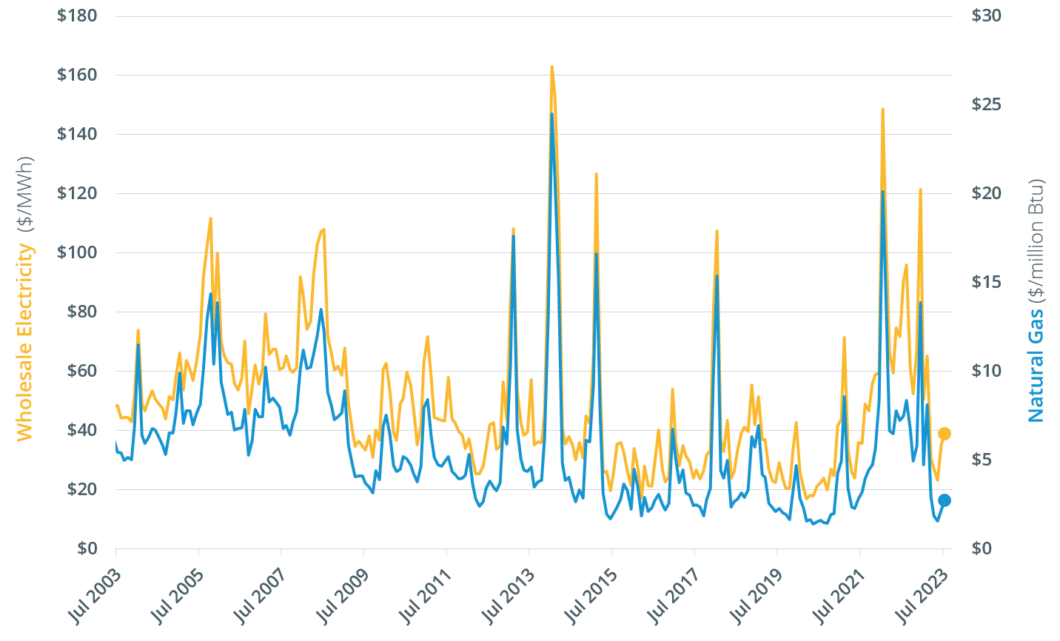The Maine legislature has taken a significant step to promote the economic reuse of agricultural land contaminated by perfluoroalkyl and polyfluoroalkyl substances (PFAS) through the development of renewable energy projects. A newly enacted law will require state regulators to solicit proposals for renewable energy projects, with a primary preference given to projects located on PFAS-contaminated agricultural land. The law could help Maine address challenges arising from farmland contamination with PFAS, while promoting renewable energy development.
Importantly, the law represents a new wave of Maine energy contracting policy, because it requires the procurement of both energy and renewable energy credits (RECs), rather than one or the other. By mandating the acquisition of both energy and RECs, the law has potential to enable Maine consumers to truly say they consumed renewable power specifically from these projects, as a result of these contracts.
An Act to Promote Economic Reuse of Contaminated Land Through Clean Energy Development was introduced as LD 1591, a bipartisan bill sponsored by Senator Stacy Brenner with co-sponsors including Representative Zeigler, Senators Bennett, Black, Carney, LaFountain, and Pouliot, and Representatives Boyle, Campbell, and Hall. In a statement, Senator Brenner noted that PFAS chemicals have been found on at least 56 Maine farms in high amounts, limiting or effectively ending their agricultural production.
In response, the sponsors proposed a bill that called for the Maine Public Utilities Commission to solicit proposals to sell power from renewable projects on contaminated agricultural lands. Following amendment by the Joint Standing Committee on Energy, Utilities and Technology, the law was enacted by the Maine legislature as Public Laws of 2023 chapter 321, and signed by Governor Mills on June 26, 2023.
In its final form, the law requires the PUC to conduct one or more competitive solicitations for contracts for energy and renewable energy credits from new renewable energy projects. The law requires the PUC to direct Maine's investor-owned transmission and distribution utilities to enter into contracts to purchase power and RECs from selected projects. The law prescribes procurement of amounts equal to at least 5% of Maine's retail electricity sales in 2021, plus additional amounts to cover any unused contracting capacity under a previously enacted procurement law.
The law requires the PUC to select only projects that will benefit ratepayers, to give primary preference to projects located on contaminated land, with secondary preference for projects that minimize use of forested land and uncontaminated farmland. Contracts can be for up to 20 years, or longer if the PUC finds this prudent. Projects combined with grid-connected energy storage systems are also eligible but must promise that the storage system will remain stationary and under the same ownership throughout the contract term. Combined projects must also submit a separate generation-only bid.
A critical distinction of this law is its explicit requirement that proposals and contracts include both "energy and renewable energy credits", rather than offering either/or options. RECs represent the environmental attributes associated with a given megawatt-hour of electric energy and are crucial for tracking renewable energy under Maine's renewable portfolio standard. The holder of a REC generally may make claims about their use of renewable electricity, which effectively uses up the REC. The same claims can't be made if the REC is sold separately to someone else.
Other recent Maine contracting programs generally have not required the sale of both energy and RECs. Nearly all contracts awarded under these programs have been for energy and not for RECs. Project developers selling their energy under these Maine programs typically sell their RECs separately to buyers in southern New England states who will use the RECs for compliance with their own state's renewable energy laws. As a result, these other Maine contracting programs don't generally directly result in renewable energy supply to Maine consumers.
By contrast, the recently enacted clean energy development on contaminated land act requires contracts to be for both energy and RECs. It requires the PUC to adopt a process to assign the procured RECs to a standard-offer service provider to satisfy its own renewable portfolio standard requirements. While the details of that process will be specified by rule, the law contemplates that the procured RECs will enable Maine consumers to claim they consumed renewable energy as a result of contracts awarded under this program, unlike some of Maine's other recent energy contracting programs.




















